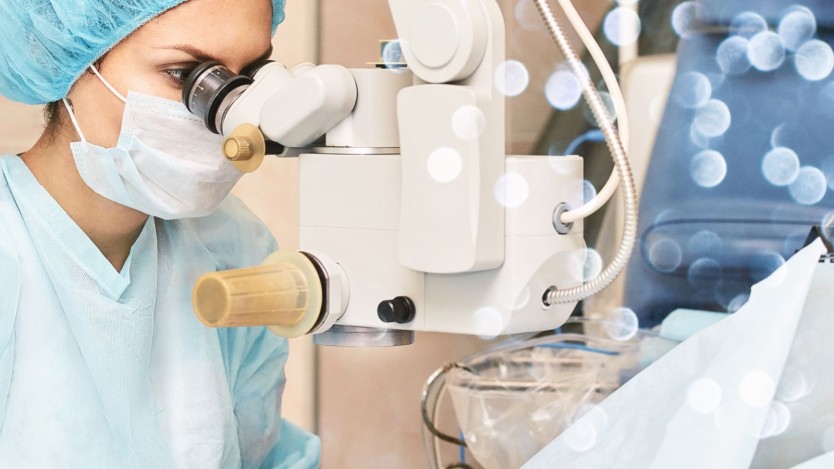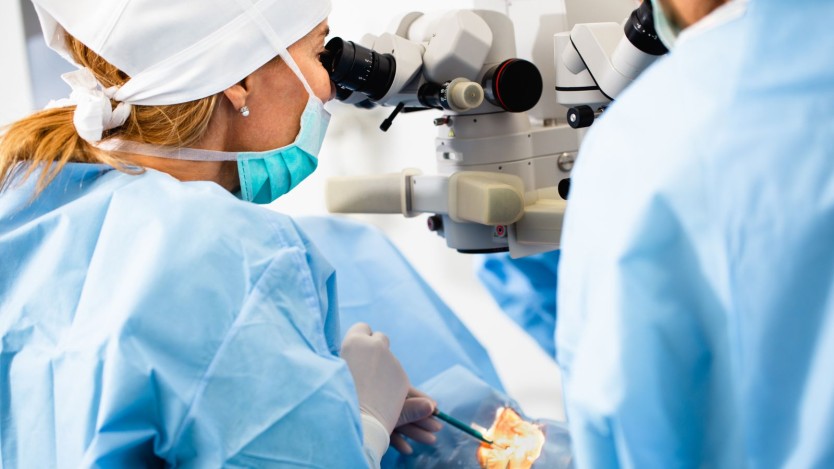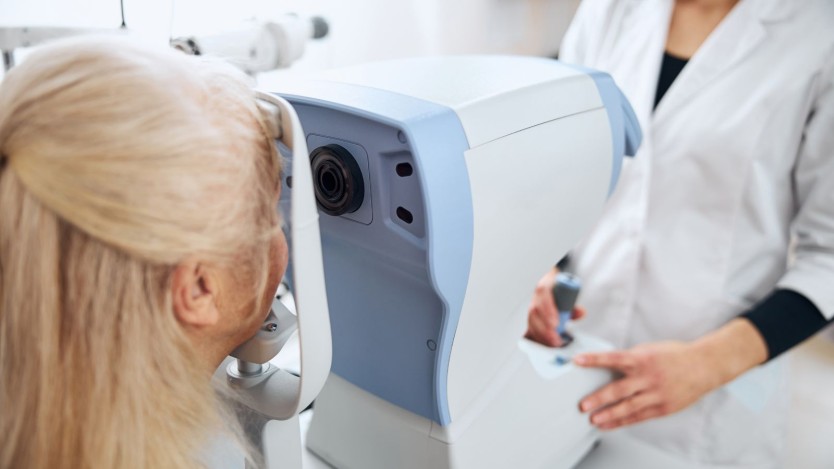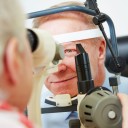Postoperative period after cataract surgery

- Cataracts surgery
- Postoperative period after cataract surgery
- 1 week after cataract surgery
- 1 month after cataract surgery
- Possible postoperative complications
- The postoperative period after cataract surgery is usually the same regardless of the type of intraocular lens used.
- After cataract surgery, the patient leaves the hospital immediately on their own feet and with their eye uncovered.
- The return to everyday life is practically immediate, usually taking a couple of days to adjust to the new vision and for the eye incision to heal.
Cataracts surgery
Cataracts can be defined as the ageing of the crystalline lens, causing the blurred vision associated with this pathology. This is because the light that enters the eye falls on the crystalline lens, whose function is to focus the light received towards the retina, which will be responsible for sending this information to the brain via the optic nerve.

Do you need cataract surgery?
Request a free and immediate appointment with our specialists
If the lens is opacified due to cataracts, the image received by the retina will be blurred and consequently, the patient's perception of reality will be out of focus.

To solve cataract problems, a quick surgery is usually performed which consists of dissolving the original crystalline lens and placing an intraocular lens in its place.
This is performed using the phacoemulsification technique through a mini-incision in the side of the cornea, obtaining excellent results in the vast majority of patients.
Postoperative period after cataract surgery
Immediately after the cataract surgery, which lasts about 30 minutes, the patient is given a report with the treatment to be followed, the different postoperative steps and a card certifying the intraocular lens that has been implanted, explaining whether it is a monofocal or multifocal lens.
In many cases, but not always necessary, the patient is given a post-operative kit containing sunglasses to prevent direct sunlight from entering the eye while it heals, a plastic occluder to avoid scratching or rubbing the eye at night, a bottle of artificial tears to lubricate the eye, gauze and, in some cases, the DVD of the surgery.

After this, the patient can leave the hospital immediately with the eye uncovered, but wearing sunglasses. It is advisable for the patient to stay at home during the first and second day while he or she adjusts to the new vision and the incision made in the lens regenerates.
The day after the surgery, the patient will go to the clinic for the first dressings and will have to follow up with the ophthalmologist as indicated by him/her.
1 week after cataract surgery
Patients who have undergone cataract surgery must follow the treatment prescribed by the ophthalmologist to the letter to avoid possible complications, contacting the ophthalmologist with any questions that may arise.
After discharge from hospital, the patient can carry out many daily activities, such as reading, writing, watching television or walking, but not driving for at least the first 24-48 hours, and until the end of the treatment if possible to avoid any problems.
During the first postoperative week, the patient may experience stinging, sensitivity in the eye and even flashes or halos of light. This is normal and will diminish over time as the eye adjusts to the new lens.
Similarly, during the first postoperative week after cataract surgery, the patient should avoid water sports to prevent water from entering the eye, rubbing the eye and keeping out dirt and dust, and it is advisable not to use make-up in the area until the doctor says so.
The patient can take a shower, shave if he is a man, wash his face, always taking care not to get water in his eyes.
The return to normal sexual activity and physical exercise can be resumed after the first postoperative week, when the patient is physically fit and there are no contraindications from the ophthalmologist.
1 month after cataract surgery
Throughout the first postoperative month, the eye will recover quickly from surgery, usually within the first week, with the longest part of the postoperative period being the time the brain needs to adapt to the implanted intraocular lens to achieve optimal vision.
During this time, the patient may notice dryness in the eye, something that the doctor will help to solve with a treatment of eye drops, which are normally given at the end of the cataract operation as mentioned above.

It is important to attend post-operative consultations with the ophthalmologist as scheduled. A few weeks after the operation, provided there are no complications, the patient can be operated on the other eye if necessary.
Although at this stage the patient will probably already notice an improvement in the symptoms associated with cataracts, such as colour visibility, it is important not to assess whether it has been a success until both eyes have been operated on and a reasonable period of time has passed for lens-brain adaptation.
In cases of cataract surgery in both eyes, it will take several weeks, even up to 3 months, before the definitive results of the intraocular lens implantation can be seen.
Possible postoperative complications
Provided the patient is in good eye health, beyond the ageing of the crystalline lens that causes cataracts, the most common complication that can occur is secondary cataract.
This postoperative complication occurs after 2 to 4 months and consists of the opacification of the membrane that supports the implanted intraocular lens. If this occurs, the surgeon will perform a laser intervention to make a hole in the membrane and allow light to pass through.

Do you need cataract surgery?
Request a free and immediate appointment with our specialists
Medical disclaimer: All the published content in Operarme is intended to disseminate reliable medical information to the general public, and is reviewed by healthcare professionals. In any case should this information be used to perform a diagnosis, indicate a treatment, or replace the medical assessment of a professional in a face to face consultation. Find more information in the links below:
